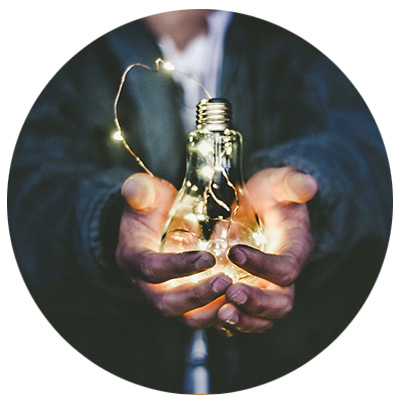Landover Substance Abuse Hotline
Types of drugs commonly associated with addiction: Drug addiction in Landover can occur with various substances such as opioids, cocaine, marijuana, methamphetamine, and prescription medications.
Common signs of substance abuse: It is important to recognize the signs of substance abuse, which may include frequent mood swings, changes in behavior, neglecting responsibilities, secrecy, and physical or psychological dependence.
Mental Health and Co-occurring Disorders
Many individuals In Landover struggling with addiction also experience mental health disorders. The link between addiction and mental health is a complex and intertwined one. It is important to understand the connection between these conditions in order to effectively address and treat them.
Common Co-occurring Disorders
Depression, anxiety, and bipolar disorder are some of the most common mental health disorders that co-occur with addiction. These conditions often exacerbate each other, making it more challenging for individuals to recover from substance abuse.

Support Groups in Landover
When dealing with addiction, it’s important to remember that you are not alone. Support groups are valuable resources that offer guidance, encouragement, and a sense of community to individuals struggling with substance abuse. Two widely recognized support groups are AA (Alcoholics Anonymous) and NA (Narcotics Anonymous), both of which are founded on the 12-step approach to recovery.

Intervention Strategies
When it comes to addiction, sometimes a direct and structured approach is needed to help the individual recognize the severity of their situation and seek help. Interventions can play a crucial role in encouraging someone to seek treatment for their addiction. Here are some key strategies to consider:
Addiction Helpline Services For Landover
In times of crisis, it is vital to have immediate access to assistance and support. Addiction helpline services play a crucial role in connecting individuals struggling with addiction to the help they need. These helplines offer a range of services to address various needs and ensure that help is just a phone call or text away.
Signs and Symptoms of Substance Abuse
Behavioral Indicators of Addiction
Substance abuse often leads to noticeable changes in an individual’s behavior. Some common behavioral indicators of addiction include:
- Drastic changes in mood or personality
- Withdrawal from social activities or hobbies
- Inability to fulfill responsibilities at work, school, or home
- Engaging in risky or dangerous behaviors
- Lying or being secretive about substance use

Treatment Options
When it comes to overcoming addiction, there are various treatment options available to help individuals on their journey to recovery. Here are some of the key approaches:
Landover Inpatient vs. Outpatient Rehab Centers
One of the primary choices to make when seeking addiction treatment is deciding between inpatient and outpatient rehab centers. Inpatient rehab centers provide a highly structured environment where individuals reside for a specified period of time, typically ranging from 28 days to several months. On the other hand, outpatient rehab centers allow individuals to attend therapy and counseling sessions while still living at home. While inpatient rehab centers offer intensive support and round-the-clock supervision, outpatient rehab centers provide more flexibility for those who cannot commit to a residential program.

Health Insurance Coverage for Addiction Treatment
When it comes to addiction treatment, understanding your health insurance coverage is crucial. Whether you are seeking help for yourself or a loved one, knowing what is covered can make a significant difference in accessing the necessary care. Here are some key points to consider
Recovery Tools and Resources
Recovery is a lifelong journey, and having the right tools and resources can greatly aid in the process. Here are some essential recovery tools and resources to consider:
Introduction to Recovery Tools
There are various recovery tools available that can provide support and guidance on your journey to sobriety. These tools range from mobile apps, books, podcasts, to online resources. Whether you prefer a more interactive experience or enjoy reading and listening, these resources can offer valuable insights and encouragement.
Family and Loved Ones
Supporting Family Members or Friends Dealing with Addiction:
- Offering emotional support and understanding
- Listening without judgment
- Encouraging them to seek professional help
- Attending therapy sessions or support group meetings with them

Reminder of the wide range of topics covered by addiction hotlines:
It is important to recognize that addiction hotlines cover a wide range of topics beyond just substance abuse. They also provide support and information on mental health, co-occurring disorders, intervention strategies, treatment options, and resources for recovery.
No matter what aspect of addiction you or your loved ones are facing, addiction hotlines are a comprehensive resource that can offer guidance and assistance.
About Landover
Rehab Treatments In Landover Maryland
- Alcohol Addiction Landover
- Alcohol Detox Landover
- Alcohol Rehab Landover
- Alcohol Rehab for Veterans Landover
- Finding the Best Alcoholism Rehab Near Me in Landover
- AA Free & Confidential Alcoholics Anonymous Helpline Landover
- Benzodiazepines Rehab Near Me Landover
- Christian Drug Rehab Landover
- Drug Rehab-addiction Treatment Centers Near You Landover
- Dual Diagnosis Treatment Centers Near You Landover
- (EAP) Employee Assistance Programs Landover
- Fentanyl Landover
- Find 30-Day Inpatient Drug Rehabs Near You! Landover
- Find 60 Day Inpatient Drug Rehabs Near You! Landover
- Find 90 Day Inpatient Drug Rehabs Near You! Landover
- Hydrocodone Landover
- Inpatient Drug and Alcohol Rehab Near Me Landover
- Inpatient Drug Rehab Treatment Program Landover
- Luxury Drug & Alcohol Addiction Treatment Centers Landover
- Mental Health, Addiction, and Drug Rehab Landover
- NA Hotline, Narcotics Anonymous 24 Hour Hotline Landover
- Online Therapy|Mental Health|Substance Abuse|Dual Diagnosis Landover
- Mental Health Online Therapy | Teletheraphy Landover
- Outpatient Drug Rehab Near Me Landover
- Oxymorphone Landover
- Prescription Drugs Landover
- Student Drug Rehab Landover
About Maryland
Browse by State
- ALABAMA
- ALASKA
- ARIZONA
- ARKANSAS
- CALIFORNIA
- COLORADO
- CONNECTICUT
- DELAWARE
- FLORIDA
- GEORGIA
- HAWAII
- IDAHO
- ILLINOIS
- INDIANA
- IOWA
- KANSAS
- KENTUCKY
- LOUISIANA
- MAINE
- MARYLAND
- MASSACHUSETTS
- MICHIGAN
- MINNESOTA
- MISSISSIPPI
- MISSOURI
- MONTANA
- NEBRASKA
- NEVADA
- NEW HAMPSHIRE
- NEW JERSEY
- NEW MEXICO
- NEW YORK
- NORTH CAROLINA
- NORTH DAKOTA
- OHIO
- OKLAHOMA
- OREGON
- PENNSYLVANIA
- RHODE ISLAND
- SOUTH CAROLINA
- SOUTH DAKOTA
- TENNESSEE
- TEXAS
- UTAH
- VERMONT
- VIRGINIA
- WASHINGTON
- WEST VIRGINIA
- WISCONSIN
- WYOMING
Image Credits to Unsplash
Images Credits to Unsplash
https://unsplash.com/photos/four-person-hands-wrap-around-shoulders-while-looking-at-sunset-PGnqT0rXWLs?utm_content=creditCopyText&utm_medium=referral&utm_source=unsplash
https://unsplash.com/photos/people-laughing-and-talking-outside-during-daytime-nF8xhLMmg0c?utm_content=creditCopyText&utm_medium=referral&utm_source=unsplash
https://unsplash.com/photos/man-holding-incandescent-bulb-7e2pe9wjL9M?utm_content=creditCopyText&utm_medium=referral&utm_source=unsplash
https://unsplash.com/photos/a-woman-rests-her-head-on-another-persons-shoulder-KQfxVDHGCUg?utm_content=creditCopyText&utm_medium=referral&utm_source=unsplash
https://unsplash.com/photos/person-sitting-while-using-laptop-computer-and-green-stethoscope-near-NFvdKIhxYlU?utm_content=creditCopyText&utm_medium=referral&utm_source=unsplash
https://unsplash.com/photos/people-standing-on-shore-during-golden-hour-V3dHmb1MOXM?utm_content=creditCopyText&utm_medium=referral&utm_source=unsplash

